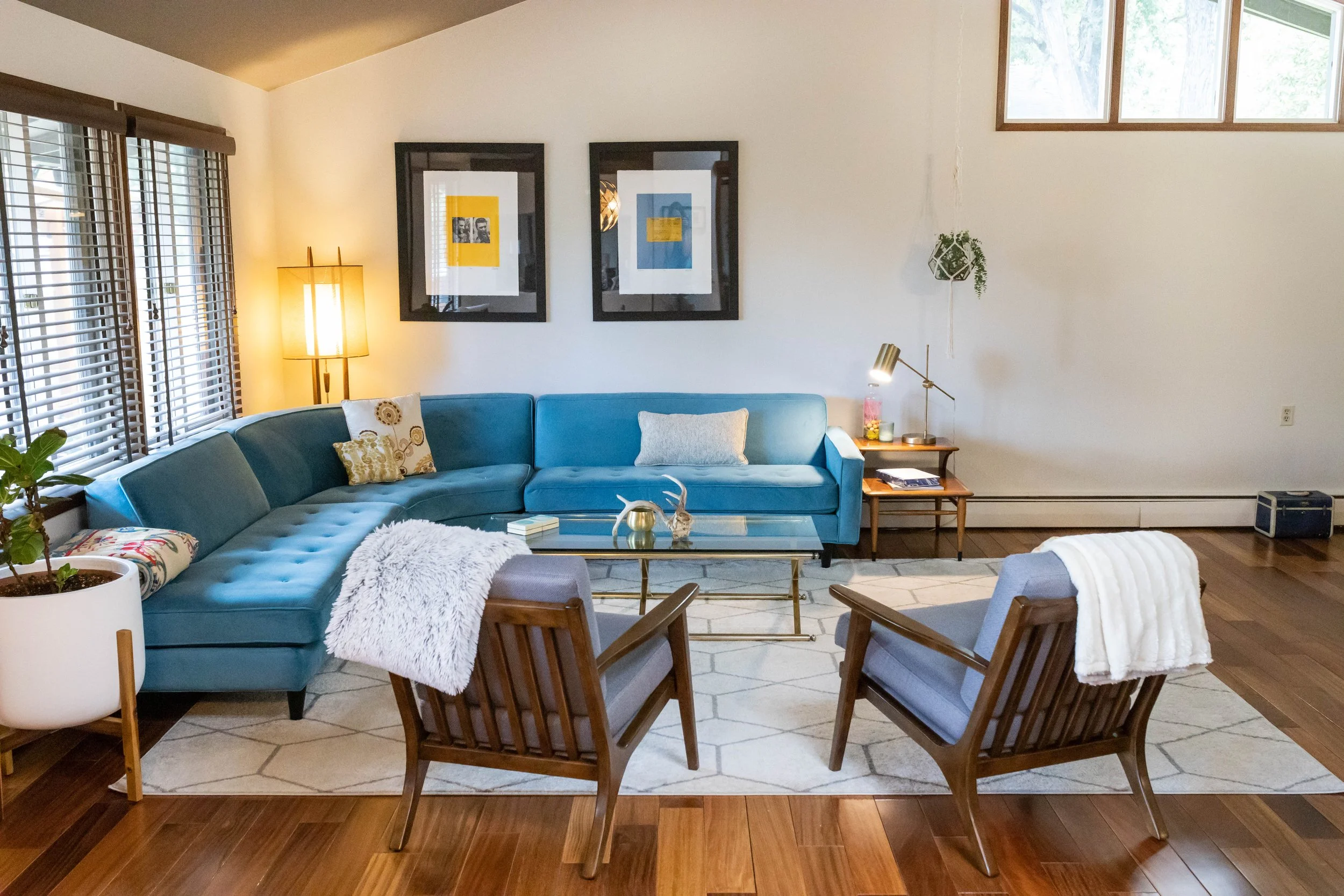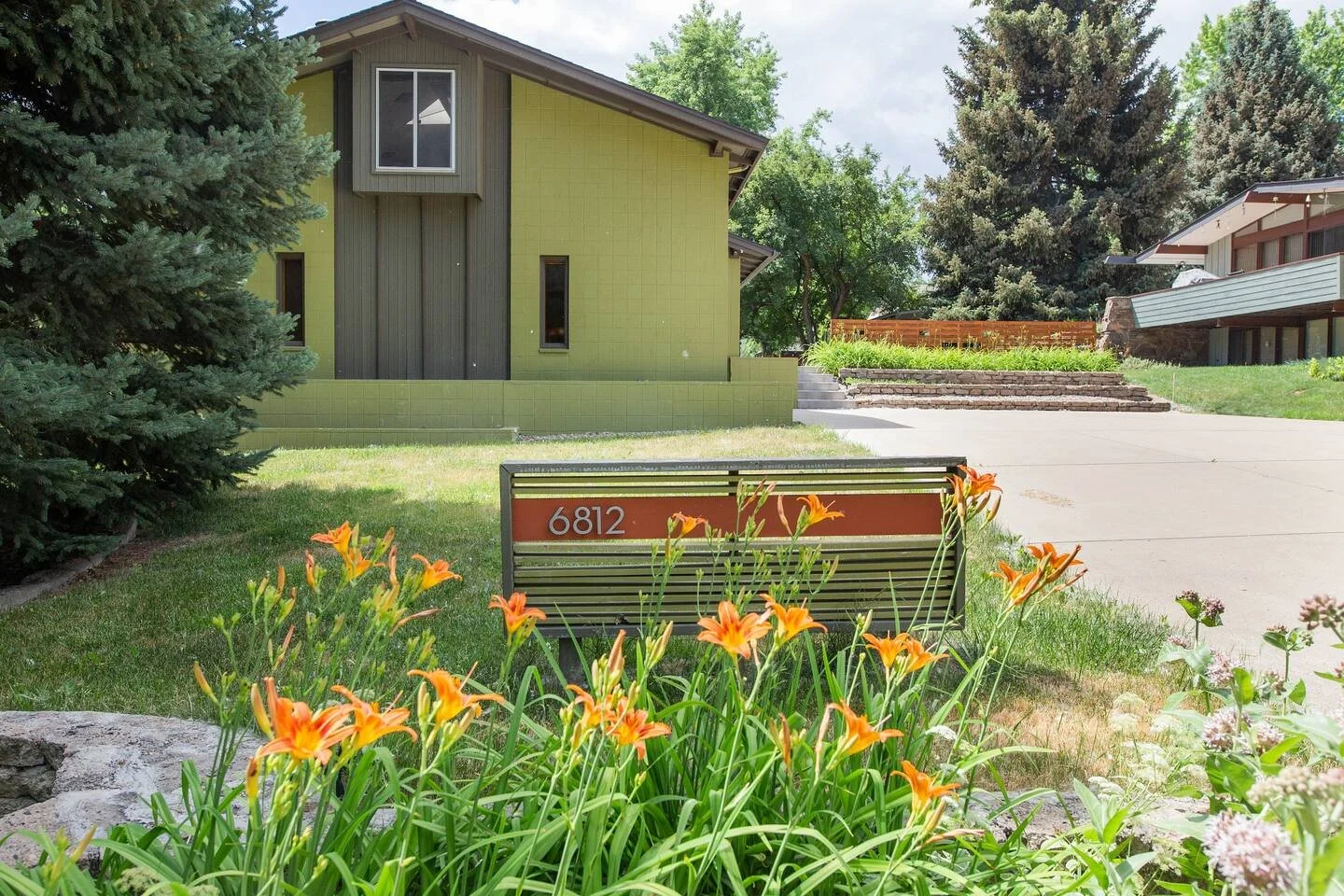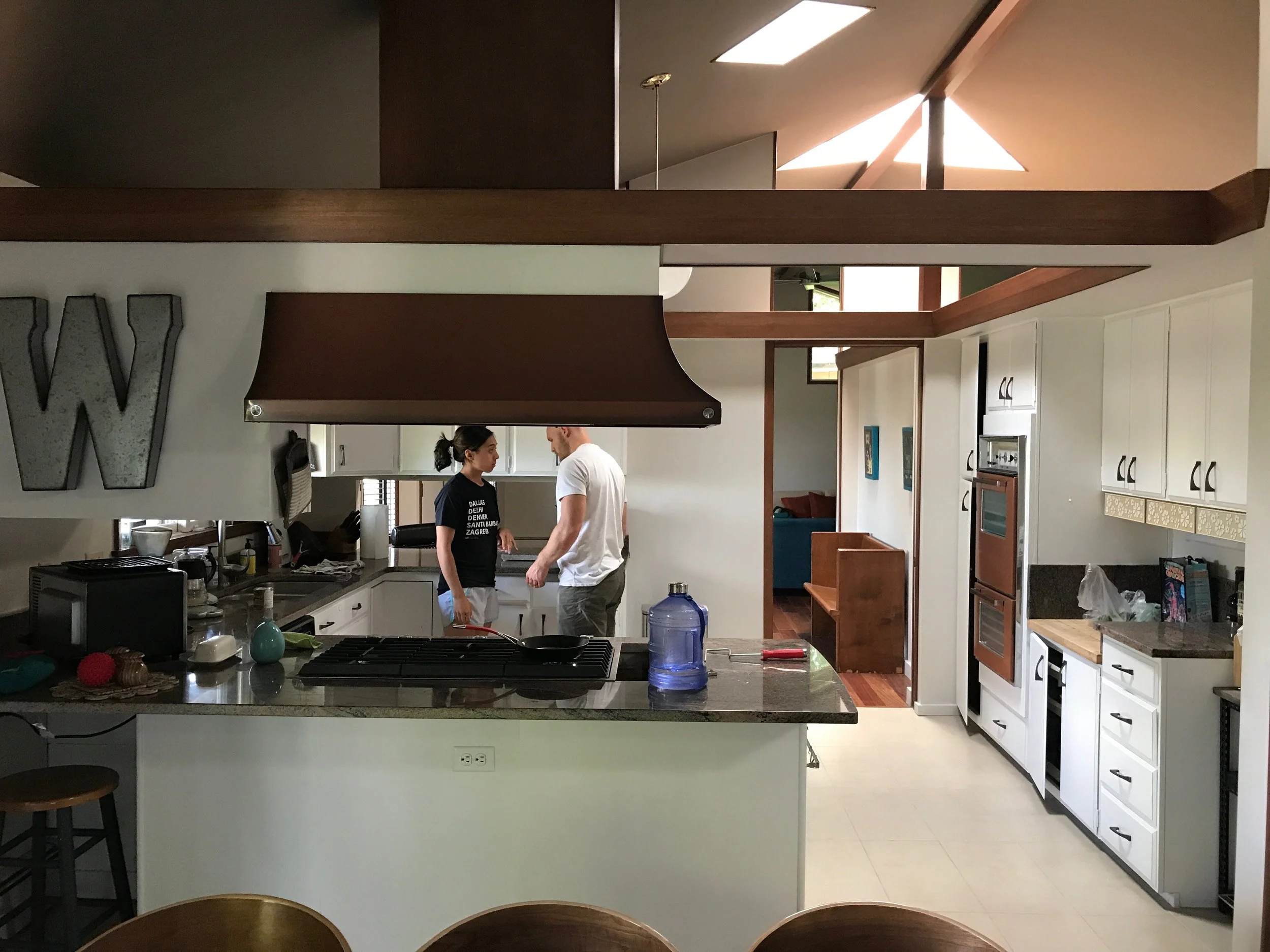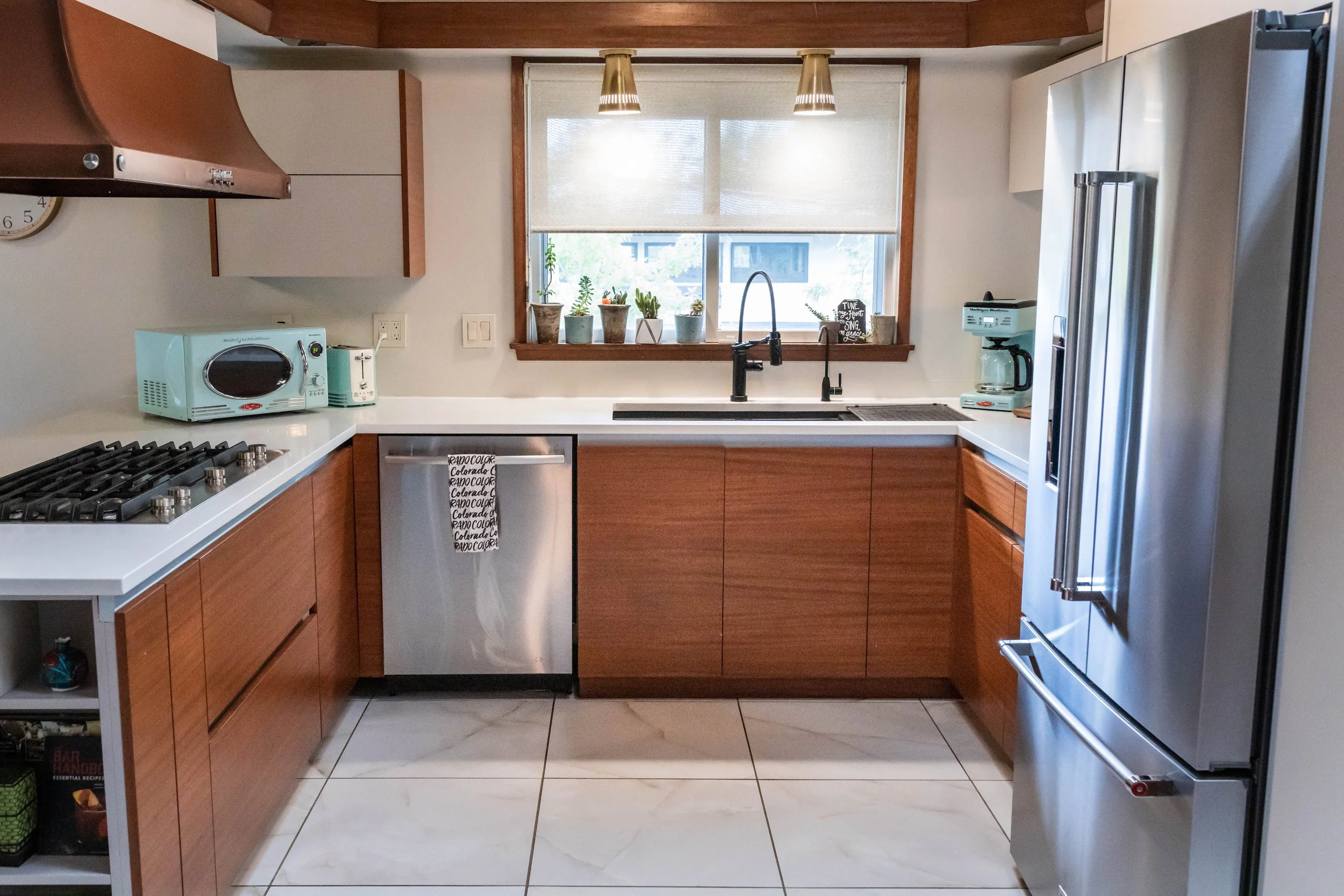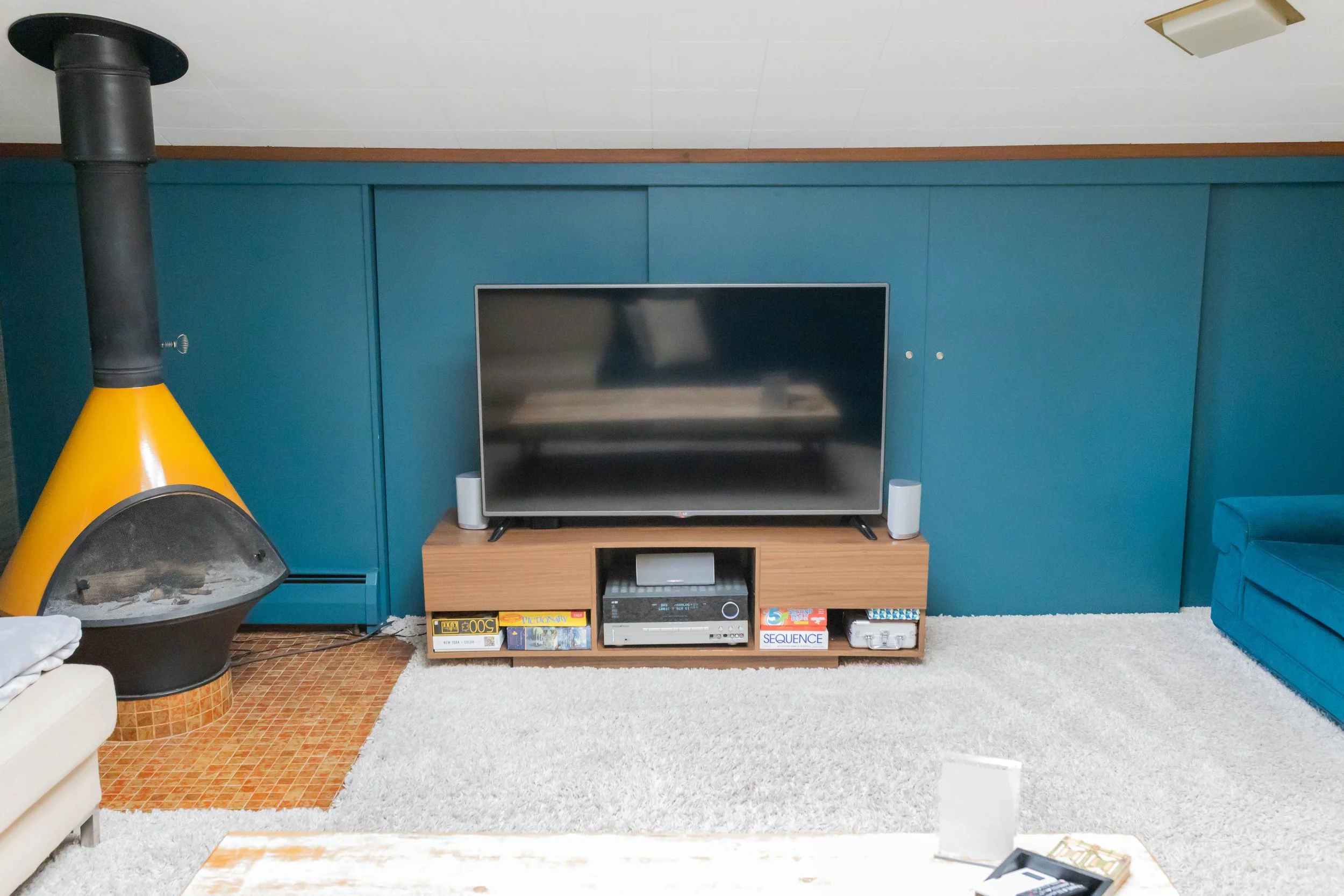Why This Mid-Century Home Works: A Case Study in Thoughtful Design
The curved turquoise sectional and walnut accent chairs sourced from Scandinavian Designs. Artwork by Jeff Scott. MCM floor lamp designed by Adrian Pearsall.
There’s something special about a home that still carries the rhythm of its era. When I first stepped into Justin and Autumn Williams’ mid-century modern home, designed by Charles Zecher in 1965, it felt like time travel in the best way—original details intact, architectural lines still proud, and updates so respectful you almost miss them.
While Justin handled nearly every detail of the renovation and design himself, I had the joy of helping stage the home to capture its full character. This house quickly became one of my favorite examples of how to update a mid-century home without erasing its soul.
A Funky Find in a Quiet Neighborhood
Justin wasn’t just house hunting—he was searching for a feeling.
“We were looking for a house that looked like something the Brady Bunch had lived in,” he told me. “Something funky—mid-century—with multiple split levels. This checked all the boxes.”
Designed by Charles Zecher, the home sits in a quiet neighborhood with just a handful of mid-century builds among more traditional houses. That contrast made it even more appealing.
“I did research on every MCM neighborhood,” Justin said, “and when this one came on the market, it stood out because it was a one-off in a normal neighborhood. That made me like it even more.”
Updated address signage and vibrant daylilies bring a cheerful, retro charm to the front approach—perfectly complementing the home’s iconic lines and bold palette.
Architect Charles Zecher’s 1965 design shows its playful geometry from the start—sloped rooflines, vertical siding, and a bold chartreuse façade that feels both sculptural and welcoming.
Updating With Integrity
Many mid-century homes require balancing preservation with livability, and Justin achieved that with remarkable sensitivity. His updates feel seamless—modern where necessary, but always in conversation with the home’s original design.
“It was already livable—we just updated things that needed to be replaced, like appliances, while keeping some things intact, like the vent hood in the kitchen because it still worked and was so unique.”
The kitchen, with its open semi-open concept, walnut cabinetry, and crisp white countertops, captures that balance perfectly. Its geometric detail nods to Zecher’s architectural lines while introducing a brighter, more functional space for everyday use. Across the house, warm walnut tones tie new and old together—seen in the trim, built-ins, and even the furniture—preserving the rhythm of the original millwork.
He tackled every update himself.
“I was the designer and the GC for the updates.”
The kitchen’s cabinetry, for example, was reproduced to match the original trim.
“I worked with a cabinet company to recreate the look of the original wood trim for our kitchen cabinets,” he said.
The kitchen before the updates.
Updated kitchen with walnut cabinets, clean white countertops, and new appliances. Vent hood and stove top original to the house.
Designer’s Note: The best updates feel inevitable—like they’ve always belonged there. That’s what makes a renovation feel timeless.
In the living spaces, the furnishings echo the home’s playful MCM spirit. The curved turquoise sofa and low, wood-framed lounge chairs mirror the era’s organic shapes without feeling theme-y. Paired with textural rugs, brass accents, and soft neutrals, they bring warmth and cohesion to the open plan.
And while many homeowners rush to strip out older features, Justin took the opposite approach.
“We loved the unique look of the loft with shag carpet and decided not to touch it.”
A vintage Malm fireplace and shag carpet, both original to the home, updated with MCM furniture and teal painted closet panel doors.
Stories Hidden in the Walls
Like most MCM homes, this one came with its share of surprises—both architectural and personal.
“There was an ornate wooden cross that came with the house,” Justin shared. “The original owner who designed the house built a small version that was later scaled up into a large cross for a local church.”
Another discovery came in the form of a mysterious cutout in the living room wall.
“When I asked the original owner’s son about it, he said his dad built it to hold card tables for when they had friends over to play bunco.”
Details like these remind us that mid-century homes weren’t just designed for form—they were built for connection.
The living room features built-in bookshelves with grasscloth shutters to hide the TV, a brass fireplace, and clerestory windows to bring in natural light from above.
When asked which space feels most “him,” Justin didn’t hesitate.
“The kitchen. Probably because I designed it.”
But he also has a soft spot for the upper loft—a playful, nostalgic corner of the house.
“It almost feels like an adult treehouse with shag carpet,” he said. “I love that.”
And his favorite object?
“The MCM floor lamp—it’s very unique and rare.”
These personal details ground the house in lived-in warmth, not museum perfection.
Design Wisdom From a Thoughtful Owner
When I asked what advice he’d offer to others updating a mid-century home, Justin’s answer summed up everything this house represents:
“I would ask the home what it wants—not necessarily what you want. We’re all just living in it for a set time, and eventually someone else will live there. So while we updated the kitchen, it looks like it was part of the original design. I have to tell people it was updated because it looks timeless.”
Then he added, with passion that any MCM purist would applaud:
“The biggest failure I see are people who buy MCM and flip them using Ikea cabinetry. That guts the soul of the home. It shows they don’t respect mid-century homes—they’re just making money.”
His perspective captures what I love most about good design: when updates feel invisible, when new and old blend so seamlessly that the house itself still feels whole.
This 1965 Zecher home stands as a beautiful reminder that the heart of mid-century modern design isn’t just in the lines or materials—it’s in the respect for craftsmanship, history, and the quiet humility of design made to last.
Justin’s approach—preserving where possible, modernizing where necessary—embodies the kind of stewardship MCM homes deserve.
“Ask the home what it wants.”
That might just be the best design advice I’ve heard all year.
Playful art and classic furniture silhouettes bring personality without overpowering the architecture. The split-level layout keeps sightlines open and connected.

